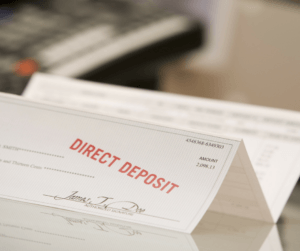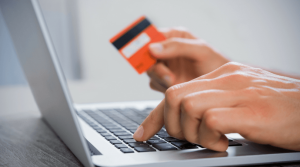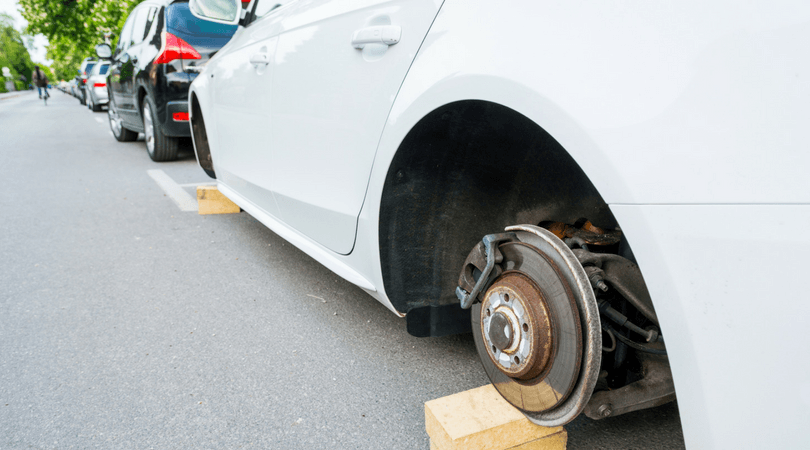If your prepaid debit card is lost or stolen, your money is protected. But only if you act quickly. Here are the steps you need to take.
Losing your prepaid card is at best a pain in the . . . um, wallet.
The good news is, if you act quickly, you won’t be on the hook if your card is used to run up a bunch of charges. But if you don’t, it could cost you–big.
Here’s what you need to do–and when you need to do it–if your prepaid card is lost or stolen.
Report It — Quickly
As soon as you realize your card is lost or stolen, call your card provider to report it.
Federal law limits your liability for fraudulent charges to your debit card if you report the lost or stolen card quickly. And “zero liability” policies of the major card networks provide protections beyond that required by federal law.
But both require you to report the lost or stolen card right away.
Protections under the Law
The Electronic Fund Transfer Act (EFTA) says that card issuers cannot hold debit card users responsible for any unauthorized charges to the card after the card is reported lost or stolen. Zero. Nada.
So, if you report your lost or stolen card before someone has a chance to use it, you’re in the clear.
If someone uses the card before your report it, your responsibility for unauthorized charges is limited to $50 if you report the lost card within two days after discovering it’s gone.
That amount jumps up to $500 if you report the loss more than two days after discovering the loss but less than 60 days from your prepaid card providing an account statement.
If you sit on your hands for longer than 60 days, you’re on the hook for all the charges to the card.
Zero Liability Policies
Visa and Mastercard both provide their protections beyond what’s required by law. Each offers a “zero liability” policy for debit and credit cards carrying their brand. The policies are similar. They both provide protections to the cardholder against unauthorized transactions.
Under the Visa and Mastercard policies, a cardholder isn’t responsible for any amount for an unauthorized charge. Not even the $50 allowed under the EFTA. But there are exceptions.
The zero liability policies apply only to transaction processed by Visa and Mastercard. For prepaid debit cards, that includes any purchase transaction made as a credit transaction. But ATM withdrawals and debit purchases using your PIN aren’t covered. That’s because debit networks–like Moneypass or Interlink–process those transactions. Visa and Mastercard only process credit transactions.
Under Visa’s policy, a cardholder may still be responsible for “gross negligence” or “unreasonable delay” in reporting the charge. Mastercard’s policy similarly excludes losses if the cardholder hasn’t used “reasonable care” in preventing theft or the cardholder hasn’t reported the loss promptly.
Visa and Mastercard don’t provide hard and fast rules to determine what’s reasonable or unreasonable. But it’s unlikely that reporting a lost or stolen card within the 2-day time frame set by the EFTA would be considered unreasonable.
Under the EFTA and the Visa and Mastercard policies, the key is acting quickly.
How to Report a Lost or Stolen Card
 You can (and should) first report a lost or stolen card by calling your card provider. You can find the number on your card provider’s website. You can also report the loss through your card’s online portal.
You can (and should) first report a lost or stolen card by calling your card provider. You can find the number on your card provider’s website. You can also report the loss through your card’s online portal.
After you notify your card issuer that the card was lost or stolen, follow up in writing if you haven’t received an email confirmation. The reason is simple–verification of the date you reported the loss. The timing is critical under the EFTA and the card networks’ policies. So, you should have proof of the date you notified your card provider in case of a later dispute.
Order a Replacement Card
Once you report your card as lost or stolen, most providers will automatically issue you a new card. Your funds will be transferred to the new card immediately.
Most prepaid cards will charge a replacement card fee. The Walmart MoneyCard® Visa® charges $3.00 for a replacement card while the replacement fee is $5.00 for the Green Dot Prepaid Visa®.
And it’ll take a few days to get the new card. Some prepaid card providers take 3 to 5 business days to ship your card. While card providers offer expedited service, the fee is usually hefty. Up to $25.
Your card provider will deduct these fees from your card’s balance.
. . . Or, Consider a New Card
With the delay in getting a replacement card and the replacement card fee, take a minute to consider getting a new card.
Does your current card have the features and limits you’re looking for? Is it the lowest cost? If not, it won’t involve much more effort than getting a replacement.
Update Your Direct Deposit Instructions
 When you replace a prepaid card, the routing number won’t change. In most cases, neither will the account number associated with the card. Confirm with your card provider when you order a replacement card whether your account number will change.
When you replace a prepaid card, the routing number won’t change. In most cases, neither will the account number associated with the card. Confirm with your card provider when you order a replacement card whether your account number will change.
If so, or if you decide to get a different card, you’ll need to update your direct deposit instructions.
Setting up direct deposit for a new account number is the same process that you initially used to set up direct deposit.
Submit your new account number to your company’s payroll department or government benefits account as soon as possible to avoid delayed payments. If the delay in processing new direct deposit instructions will cross a payday, cancel direct deposit and get a paper check for that pay period. Then set up direct deposit for the new account afterward.
If your account number won’t change, you can skip this step. The PayPal Prepaid Mastercard® and the American Express Serve® card, for example, don’t change the account number when replacing a lost or stolen card.
Update Recurring Bills
 Even if the account number stays the same, the card number won’t. So, recurring bill payments and other stored payment cards, like Netflix or Amazon, will need to be updated.
Even if the account number stays the same, the card number won’t. So, recurring bill payments and other stored payment cards, like Netflix or Amazon, will need to be updated.
To update your card number for these accounts, you’ll need to go to each vendor’s website to update your card information with the new card number, expiration date, and verification code.
To make sure you cover all your bills, check your transaction history on your prepaid card’s online portal or mobile app to create a complete list of recurring payments. Then use that as a checklist.
Steps to Take When Your Prepaid Card is Lost or Stolen–Summarized
Prepaid debit cards are much more secure than cash. If your card is lost or stolen, you have protections under federal law and Visa and Mastercard’s zero liability policies. But you need to act promptly.
Here’s the summary of the steps you need to take.
- Report the loss or theft to the prepaid card issuer promptly
- Follow up in writing
- Order a replacement card
- Update direct deposit instructions, if necessary
- Check your transaction history to get a checklist of bills
- Update recurring bills with your new prepaid card

